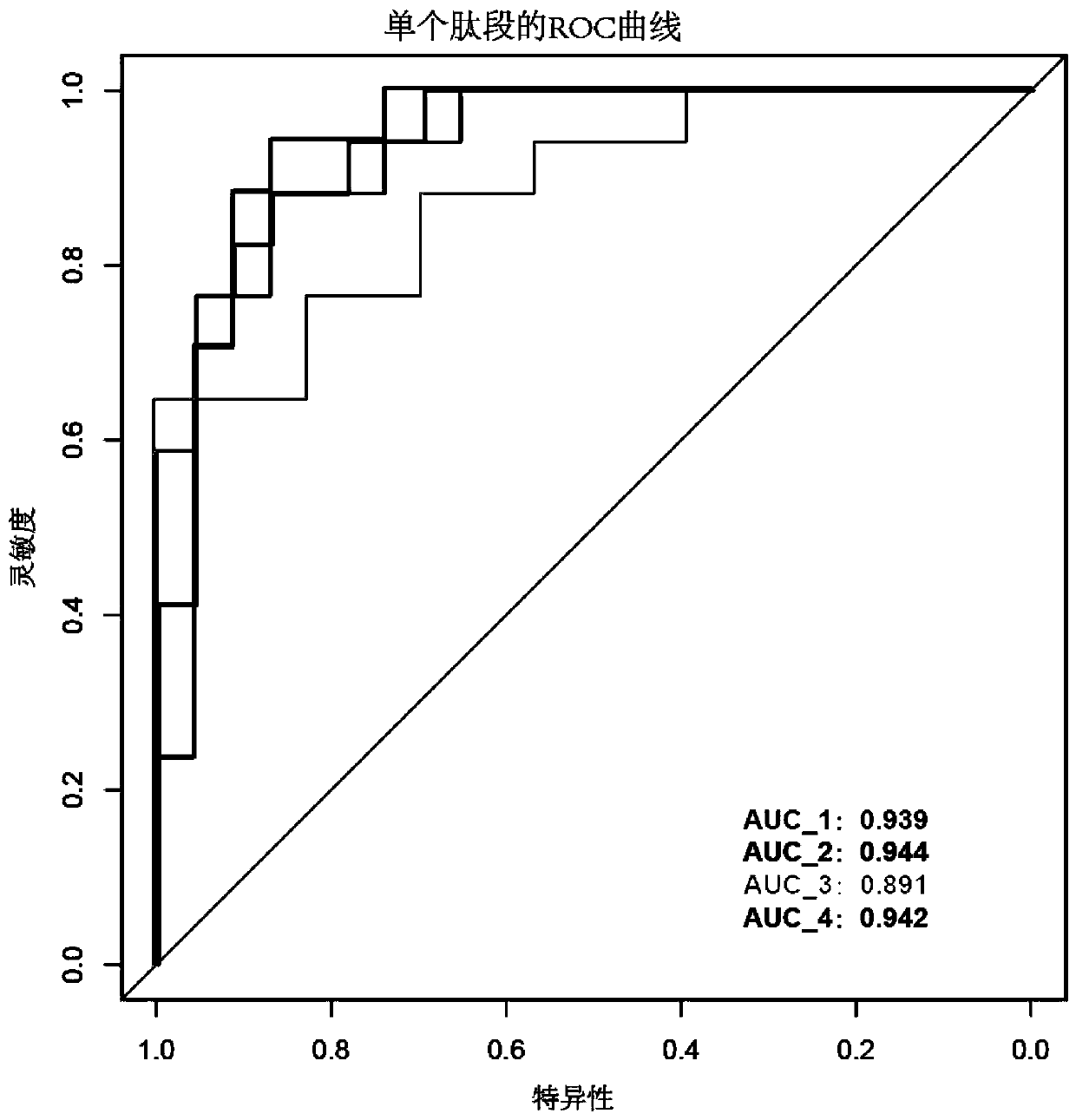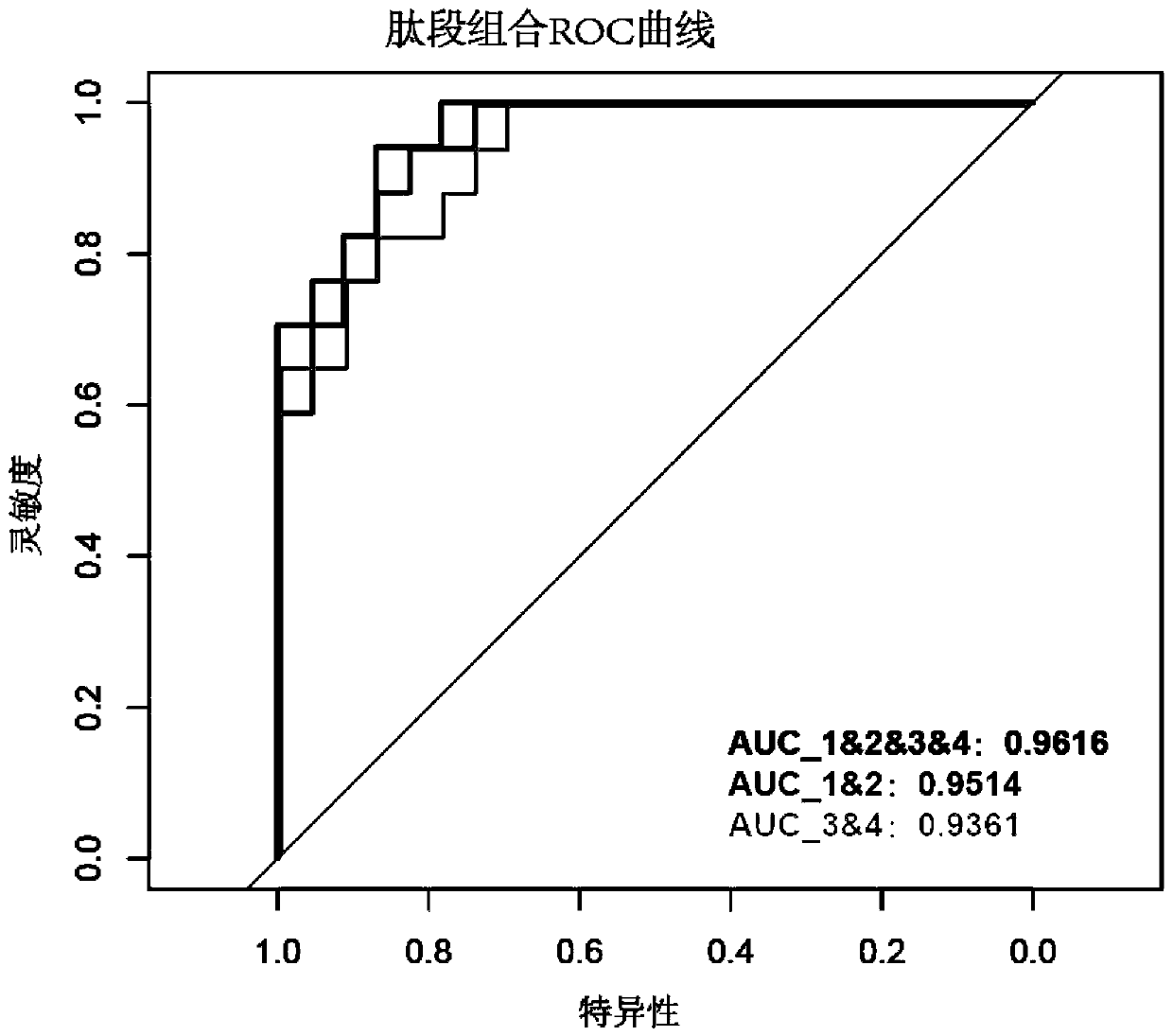Chromatographic column, and kit and device for detecting prosthetic joint infection
A chromatographic analysis and chromatographic column technology, applied in the direction of measuring devices, analytical materials, material separation, etc., can solve problems such as inability to achieve instant diagnosis, no effective solution, and insufficient sensitivity, so as to improve stability and separation Good, the effect of improving sensitivity
- Summary
- Abstract
- Description
- Claims
- Application Information
AI Technical Summary
Problems solved by technology
Method used
Image
Examples
Embodiment 1
[0097] The heavy isotope-labeled standard peptides shown in SEQ ID NO: 1, SEQ ID NO: 2, SEQ ID NO: 3 and SEQ ID NO: 4 were prepared with a final concentration of 100fmol of peptides, then shake and mix, centrifuge for 3 minutes on a 12000g centrifuge, and take the supernatant for later use;
[0098] Extract protein from 40 joint fluid samples from individuals with prosthetic joints, and then perform enzymatic hydrolysis. Take 100 μg of joint fluid proteolytic peptides from each sample and add 100 μL of sample buffer, shake and mix to prepare Joint fluid peptide solution for standby;
[0099] Take 1 μL of joint fluid peptide solution, and add 1 μL of 100 fmol heavy isotope-labeled standard peptide solution to it, then add 3uL of loading buffer, mix well, and place on a 96-well loading plate for chromatographic injection.
[0100] Mix the synthesized heavy-labeled peptides in an equimolar ratio, and mix the individual peptides according to the following concentrations: 250fmol,...
Embodiment 2
[0123] The difference between Example 2 and Example 1 is that in the chromatographic analysis column, the length of the chromatographic column tube is 150 mm, the outer diameter is 360 μm, and the inner diameter is 150 μm, and the filler is C18 reverse phase filler with a particle size of 1.9 μm. Meanwhile, the chromatographic separation time was 75 minutes.
Embodiment 3
[0125] The difference between Example 3 and Example 1 is that in the chromatographic analysis column, the length of the chromatographic column tube is 300 mm, the outer diameter is 360 μm, and the inner diameter is 150 μm, and the filler is C18 reverse phase filler with a particle size of 1.9 μm. Meanwhile, the chromatographic separation time was 150 minutes.
[0126] Both Examples 2 and 3 can effectively identify the target peptide, and carry out targeted quantitative analysis of the target peptide, and the results obtained can also well distinguish whether the prosthetic joint is infected or not (due to the data in Example 1 There is no significant difference and will not be specifically listed here). However, considering the timeliness of clinical sample detection and the cost of mass spectrometry detection, the detection conditions in Example 1 in this application are the best application conditions.
PUM
| Property | Measurement | Unit |
|---|---|---|
| length | aaaaa | aaaaa |
| particle diameter | aaaaa | aaaaa |
| particle diameter | aaaaa | aaaaa |
Abstract
Description
Claims
Application Information
 Login to View More
Login to View More - R&D
- Intellectual Property
- Life Sciences
- Materials
- Tech Scout
- Unparalleled Data Quality
- Higher Quality Content
- 60% Fewer Hallucinations
Browse by: Latest US Patents, China's latest patents, Technical Efficacy Thesaurus, Application Domain, Technology Topic, Popular Technical Reports.
© 2025 PatSnap. All rights reserved.Legal|Privacy policy|Modern Slavery Act Transparency Statement|Sitemap|About US| Contact US: help@patsnap.com



